IPscape API
Overview
IPscape’s APIs provide a robust & flexible library of API’s to improve business integration and automation. The IPscape APIs can:
Improve efficiencies
Further integrate data between your contact centre and other business applications for enhanced interactiveness
Create Lead e.g. webform to a Lead in Dialler
Update Lead Details
Load Lead List
View Performance
List of Transferred Calls
Dial Attempts – for all phone numbers for a Lead
Voicemail metadata - track important information such as when a call was received, who left the message, and how long the message was
Campaign performance – Estimated Wait Time, Agent Status
Please note that API Support is out of the scope for Technical Support and will need Professional Services engagement.
Already have an idea about API’s?
Check more information on our endpoints here: IPscape Platform API
1. What is an API?
An API, short for Application Programming Interface, is a software-to-software interface which provides a secure and standardised way for applications to communicate with each other and deliver the information or functionality requested with no user intervention.
2. How do APIs work?
APIs are sets of definitions or protocols that allow software components to communicate and interact with each other using basic sets of commands to deliver one application’s request to another and return a response in real time.
-20230526-051652.png?inst-v=a68dd326-740d-4ccb-aad0-fee40453fd90)
API Calls (Request methods)
An API call is the process of a client application submitting a request to a server's API and comprises everything that happens after the request is submitted, including when the API retrieves information from the server and delivers it back to the client (your IPscape environment).
Method Types:
GET: Retrieve data
POST: Create new data
PUT: Update or edit existing data
DELETE: Delete data
What is an API token?
An API token in IPscape is a unique identifier which acts like a username to authenticate calls to the API. The key is made up of a string of letters and numbers that identify the client. An IPscape API Token will contain two Secret Keys.
What is an API key?
An API key is a unique identifier which acts like a password along with the API token to authenticate calls to an API. The key is made up of a string of letters and numbers that identify the client. The key can grant or deny that request based on the client’s access permissions, and track the number of requests made.
3. How to use IPscape APIs
To use the IPscape API, a Workspace administrator will first need to access the markup file, this can be found by accessing the following link (replace YOUR SUBDOMAIN.ipscape.com.au with your IPscape tenant URL):
https://YOURSUBDOMAIN.ipscape.com.au/platform-api/platform-api.yaml
Ensure that the URL entered for the markup file is in lower-case.
From here, copy and paste the entire contents of the YAML file into an API management application to visualise the endpoints.
The open-source option we use for this purpose is http://editor.swagger.io .
If Swagger is used, paste the markup contents on the left-side of the screen. This should result in rendering the API markup.
Note that there is a placeholder where the subdomain should be. Under server variables, change this to your IPscape tenant subdomain, this should change the computed URL displayed as shown below.
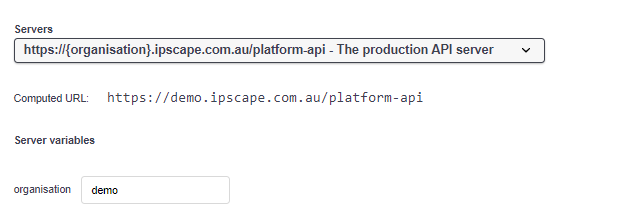
In order to authenticate API requests, users must ensure that they have a valid API token. To view or configure Tokens:
From the Workspace go to API tokens under the Integration menu
For this menu to appear:
IPscape Support enable the API token module, please raise a request with the Service Desk to enable
The User must have the correct User Role Permissions
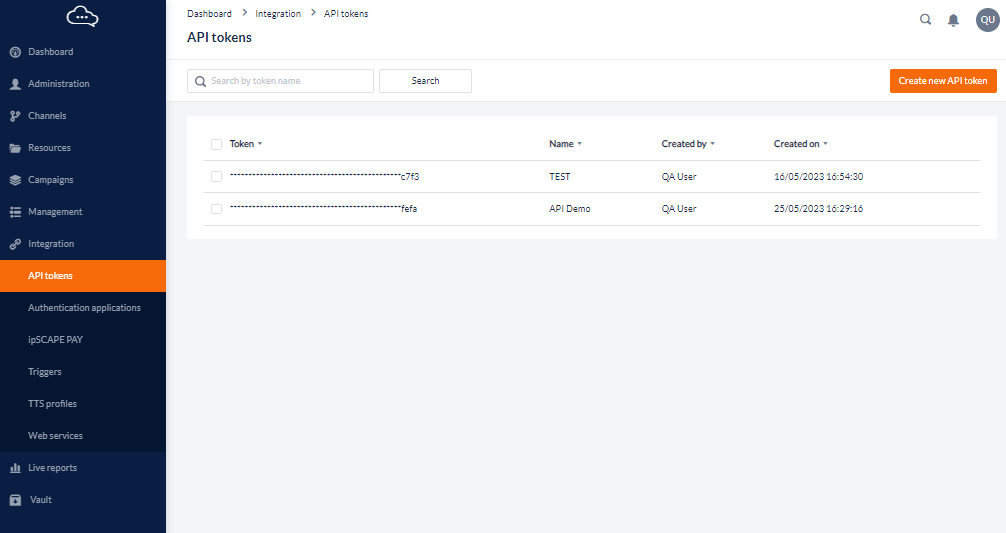
Once in the module, to create a new token, click the ‘Create new API token’ button in the top right-hand corner of the screen
Enter a meaningful name and click ‘Save’. The new token will now appear in the list
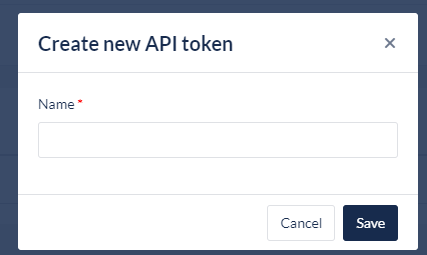
To view the token properties, click on the corresponding row. This will contain the newly generated ‘token’ and two ‘secret keys’.
This information allows an entity to poll the endpoints in the SCAPE environment, so it is important to keep it secure.
If for security reasons ensure to change the authorisation without downtime to the integration script, rotate the unused secret key, then copy the new key to the script making the call and update, then rotate the second key.
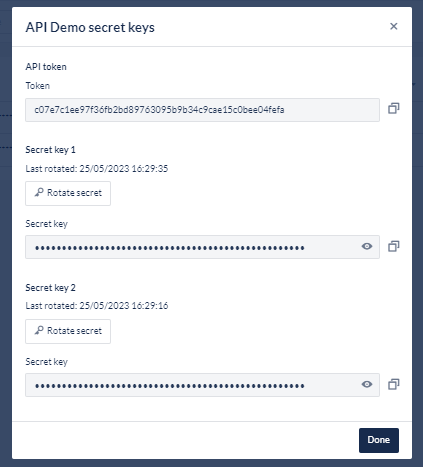
The secret keys are interchangeable. In other words, the following combinations will work:
Token + secret key 1
Token + secret key 2
To complete the authorisation, go to the API management application or script
Enter the token for the username and the secret key for the password
If Authentication Type is required, choose Basic Authorization. See below screenshot from Swagger for an example:
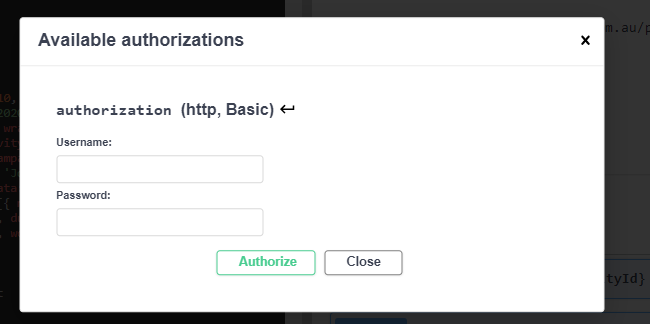
Once this is complete the API endpoints can be used.
4. API Developer Page
More details for different endpoints can be viewed on our developer page: IPscape Platform API.
5. API Endpoint Rate Limits
Rate limiting is being enforced to safeguard the platform stability and optimise resource utilisation. The limits are applied on a per-tenant basis. The current rate limits allow for a notional peak usage of 2,700 requests per minute per customer. However, actual peak usage is expected to be significantly lower due to the varied utilization of endpoints and differing customer usage patterns.
ENDPOINT | RATE LIMIT (req/min) |
|---|---|
[GET]/v3.0/activities | 60 |
[GET]/v3.0/activities/{activityId} | 300 |
[GET]/v3.0/campaigns/statistics/outbound/{campaignId} | 20 |
[GET]/v3.0/campaigns/statistics/inbound/{campaignId} | 20 |
[GET]/v3.0/campaigns | 20 |
[GET]/v3.0/media/metadata/recordings/{mediaId} | 120 |
[GET]/v3.0/media/metadata/voicemails/{mediaId} | 60 |
[GET]/v3.0/media/{mediaId} | 60 |
[GET]/v3.0/leads | 20 |
[POST]/v3.0/leads | 360 |
[GET]/v3.0/leads/bulk/{uuid} | 20 |
[GET]/v3.0/leads/bulk/{uuid}/error-msgs | 20 |
[GET]/v3.0/leads/{leadId} | 360 |
[PUT]/v3.0/leads/{leadId} | 180 |
[DELETE]/v3.0/leads/{leadId} | 180 |
[GET]/v3.0/leads/lists/{listId} | 20 |
[POST]/v3.0/leads/bulk/ | 20 |
[GET]/v3.0/leads/lists | 20 |
[POST]/v3.0/leads/bulk | 20 |
[GET]/v3.0/leads/lists | 20 |
[POST]/v3.0/leads/lists | 20 |
[POST]/v3.0/leads/bulk/{uuid}/reprocess | 20 |
[DELETE]/v3.0/customer | 120 |
[GET]/v3.0/users | 20 |
[GET]/v3.0/dialler | 20 |
[GET]/v3.0/dialler/{attemptId} | 360 |
[PUT]/v3.0/agent/availability | 120 |
[PUT]/v3.0/call/recording | 120 |
TOTAL | 2,700 |
